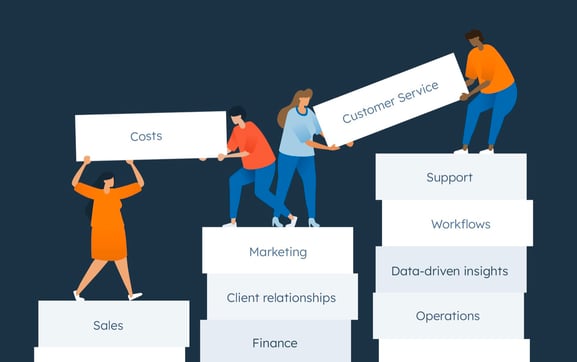
How much time do you need to spend on those critical marketing tasks? As a freelancer who has battled with meeting deadlines for blogs as well as keyword research, I understand the importance of balance when it comes to quality and time. With a standard work month in the US pegged at roughly the average number of working hours in a month in the US, optimizing workflow becomes imperative because every minute is precious. Tools like Controlio can help track and analyze how your time is spent, making it easier to stay focused and efficient. In this article, let me share my take on some core content marketing tasks along with personal anecdotes—your story may differ, but the backbone remains. So, shall we?
Performing Keyword Research: “Content’s Mine” Gold Bars Hunting Areas (1-3 Hours)
Covering content that shines simply means that effective execution can lead to brilliance. Expect anywhere between one and three hours on a project. Easy-to-use or capitalize-under-blog-niche low-competition phrases make it easier when digging deep into travel SEO. Similar investment tools like Ahrefs made my life easier. Keywords designed around user purposes go beyond traditional terms; users provide their opinions about targeted outcomes, helping reduce upfront issues. ‘Digging deeper’ solves so many problems if completed in advance.
Content Planning: Your Roadmap (2-4 Hours)
A content calendar functions much like a roadmap for a business: it helps to stay on the right track. For small businesses, this task may take 2-4 hours each month. One time, I spent three hours setting themes and deadlines for my client’s blog. This was much easier using Google Sheets, as well as other project management tools like Asana. With a structured plan in place, last-minute scrambles become a thing of the past.
Blog Writing: Crafting The Story (4-6 Hours)
A good number of restaurants have started blogs promoting their services at this point. Writing one is simple—by just typing 1,000 words, you can rapidly gain an online base for your business. With proper research and editing, speed can become a non-factor while delicate precision shines into focus.
I used to be distressed with too many tasks piling up during the day and would often feel overwhelmed trying to draft my first online article. Now that I have that down pat, alongside reasonable label expectations for myself while balancing tough drafting schedules of demanding clients, it optimizes work during hectic days paired with intimidating schedules.
Social Media Posting: Quick Profits (30-60 Minutes)
Crafting a social media post can be designed and profiled within 30-40 minutes. Personally, I remember posting an Instagram story for a cafe using Canva templates. It was seamless and took less than an hour to complete. Additionally, it is much easier if you create multiple posts in advance. Try to do them once a week and set up automation so that they will be published by Buffer or similar software. Focus primarily on one or two platforms that are preferred by the audience, and post pseudo-content that can be repeated without restrictions.
Email Marketing: Lead Nurturing (2-3 Hours)
Creating a targeted email campaign is time-consuming. For example, a newsletter with a clear fitness goals message took about 3 hours due to meticulous list segmentation and maximizing CTAs. Many programs like Mailchimp offer templates along with analytic tools. Personalization based on user behavior boosts open rates, and testing subject lines like I did with A/B checks improves them even more—with my testing, a 10% improvement!
Website Design: Visual Impression (6-10 Hours)
The making of a simplistic webpage or landing page takes from 6 to 10 hours, depending on the work that needs to be done. Using Squarespace, I was able to help redesign a friend’s portfolio in eight hours and walked through how they could do the rest themselves too. It pays to plan—spend two hours brainstorming layout, four on design, and two for function tests of your mobile-optimized pre-built themes (Google loves those). Remember that mobility increases usage: sleek pages lead to expedited conversion, so don’t skimp on time during design.
Search Engine Optimization: Increasing Exposure (1-2 Hours)
Enhancing a blog post or page for SEO, which includes meta, links, and alt text, takes an hour or two. I used to optimize some posts with tags, and it would take me roughly 90 minutes, yielding a three-to-one rank improvement increase. Check the old content every three months for updates; changes done previously also improve traffic in the long run. Use Yoast SEO to check readability as well as keyword density.
Final Note: Productivity Over Everything Else
Task duration estimation assists in pacing during a content marketing sprint, with tools like the Controlio App safeguarding efficiency by tracking time. Alongside keyword research and SEO refinement, working on these seven elements in batches using mastered templates allows task repetition, removing several hours from work and automating productivity increases drastically, whereby solving just one streamlining issue does good for workload. Best of luck hitting those ambitious targets!





More Stories
Top 9 Advantages of Partnering with a Modern IT Services & Content Solutions Provider
Unlocking Growth: The Power of a Revops agency
How Startups Can Leverage a Research Marketplace for Rapid Growth